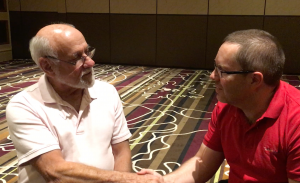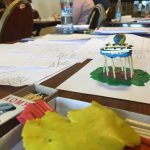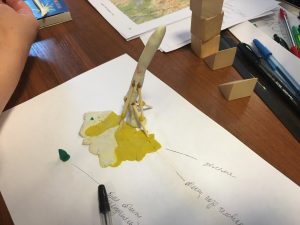Remote Viewing – “sensing with the mind”
Remote viewing is the practice of seeking impressions about a distant or unseen target using subjective means. In particular it is termed as “seeing with the mind”. Although there is a claim that remote viewing is pseudoscience, there are historical cases of military viewers who have accurately described and gained information about targets.
Typically a remote viewer is given the opportunity to give information about a target (an event, a person, an object or a location) that is physically hidden from view and mostly separated by distance.
The term “Remote Viewing” was established in the 1970’s by two physicists working for the US government, so that it could separate it from a similar term of clairvoyance. Russel Targ and Harold Puthoff were parapsychology researchers at Stanford Research Institute (SRI), and they are seen as the founding fathers of the technique which we use today.
After the declassification by the US government in the 1990’s, when Remote Viewing was under the control of the CIA, those who took part in the program started to share it with the general public. One of the most famous projects linked to Remote Viewing is the “Stargate” project, which had a budget of approximately $20 Million USD, and started in 1975.
 |
|
Here Craig is interviewing Ed May, who worked on the tasking & management side of Remote Viewing with the US Government before the decommissioning of the project |
So when you think of a typical seminar, there is a lot of theory. However the way in which we run our seminars, we focus on the practical element so that you can get comfortable with the protocol and be able to connect, and give incredible results.
You can learn how to remote view within a few minutes, but to be good at it takes practice. Certain conditions need to be fulfilled, and you also need to learn when is the best time for you to do a remote viewing session.
Our focus is on making sure that you understand what it is that you need to do.
We help you along the way, and make sure that by the end of the seminar you have the best possible toolset to be able to get the results that will amaze you.
The theory is great, but practice is even better. And below you can see some examples of the results some of our seminar attendees have achieved. Remember that when someone writes down information on the perception, and when they get to the stage of creating the model, they have no idea about the target. It is only when feedback is given that they understand how close or how far off the perception is that they have written down or used to create the model!
 |
 |
|
Two examples of 3-d models that you could build towards the end of the seminars. The model on the right – the target was the Seattle Sky-Tower … a reallu good perception was achieved by the remote viewer on this task! |
Here is a short video which was filmed with Ed May and Joseph McMoneagle, discussing remote viewing.





